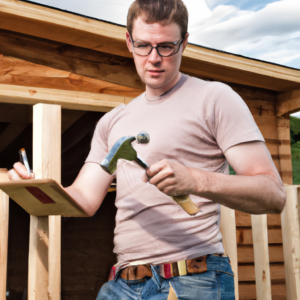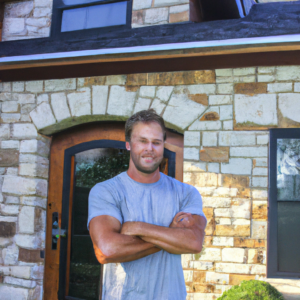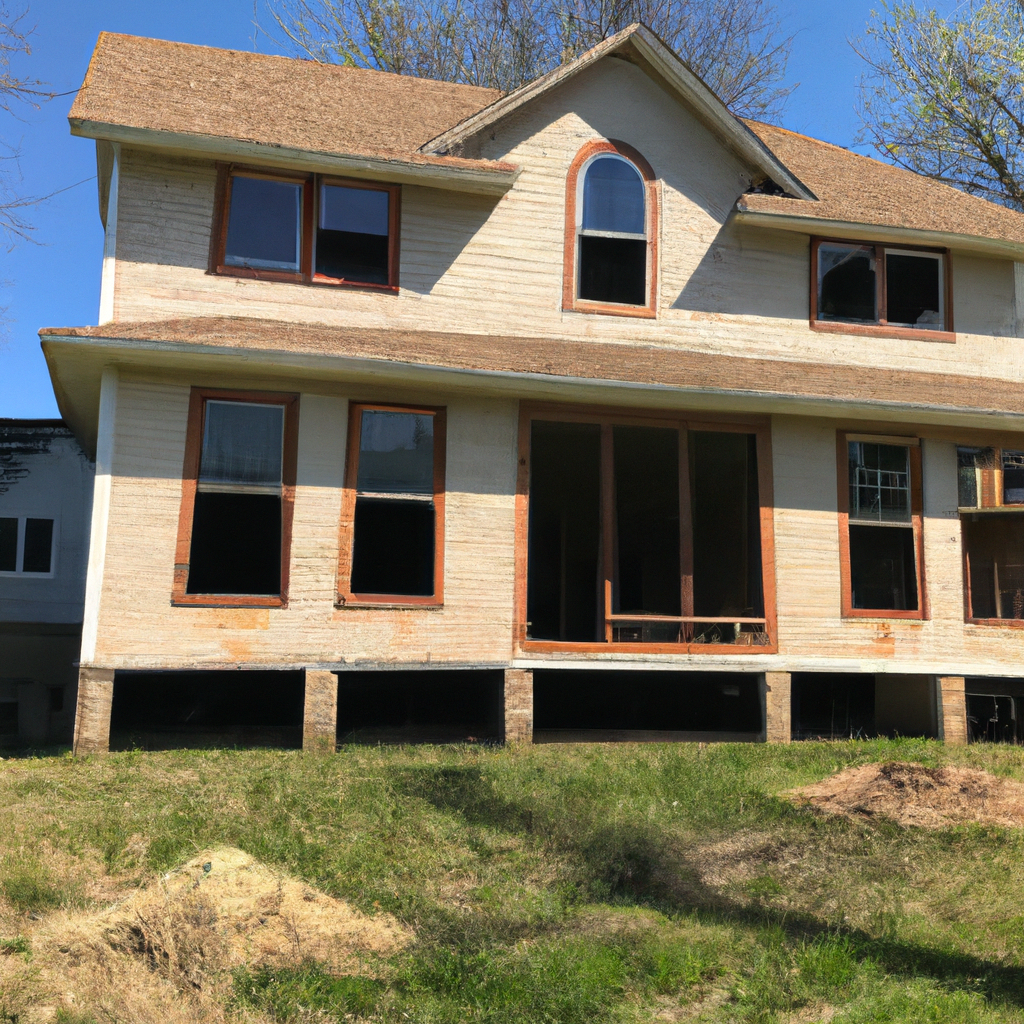The Ultimate Guide to Rehabbing Properties and Securing a Loan
Welcome, all aspiring real estate moguls and seasoned flippers. Is it your dream to transform dilapidated properties into stunning architectural masterpieces or add value to your investment portfolio? Let’s look into the world of property rehabbing and all the secrets to securing a loan that will have sellers accepting your offers to lenders giving you money for your financing.
What is Property Rehab?
Property rehab is the process of renovating a property to improve its condition. This can be done to prepare the property for sale, make it more livable, or increase its value. The extent of the rehabilitation will depend on the property’s condition and the rehabber’s goals.
Rehabbing a property can be a costly endeavor, so it is crucial to have a clear plan and budget in place before starting any work. It is also essential to consult with professionals to get an accurate estimate of the costs and time required for the project.
Once the scope of work has been determined, the next step is securing the project’s financing. Several ways to finance a rehab project include traditional loans, private loans, and government programs. Each option has its benefits and drawbacks, so it is important to compare options carefully before making a decision.
After financing has been secured, the next step is to begin the actual work on the property. This can be a challenging task, so hiring experienced contractors familiar with rehabbing properties is vital. They will be able to handle all aspects of the project from start to finish.
Once the rehabilitation work is complete, it is time to market and sell the property. This can be done through traditional channels such as real estate agents or online platforms such as auction websites. The most important thing is to price the property correctly so that it attracts buyers and generates a profit.
Pre-Rehab Steps
Before you even start the rehab process, there are a few key steps you need to take to ensure the project is feasible and that you can secure the necessary financing.
1. First, you must find a fixer-upper property that meets your criteria and is within your budget.
2. Once you’ve found a suitable property, it’s time to get estimates for the repairs and renovations needed. This will help you determine the overall cost of the project and give you a good idea of what needs to be done.
3. Next, you’ll need to apply for a loan in order to finance the rehab project. There are many different loan options available, so be sure to do your research and choose the one that’s right for you.
4. Once you’ve secured financing, it’s time to start the actual rehab process.
– Researching the Property
If you’re considering rehabbing a property, the first step is to research the property. You’ll want to know everything you can about the property before making an offer. Here are some things to investigate:
1. The neighborhood. What is the average income of residents? What are the crime rates? What is the quality of schools in the area?
2. The condition of the property. How much work will need to be done? What are the estimated costs of repairs?
3. The value of similar properties in the area. This will give you an idea of what your finished product could be worth.
4. The zoning regulations in the area. This will determine what you can and cannot do with the property once you own it.
5. The market trends in the area. Are prices rising or falling? Is there potential for appreciation?
Once you’ve done your research, you’ll have a better idea of whether or not rehabbing a particular property is a good investment for you.

– Estimating Rehab Costs
When estimating the cost of rehabbing a property, there are a few key things to remember. The first is the scope of work that needs to be done. A complete gut renovation will obviously cost more than cosmetic updates. The second is the quality of the materials you select. High-end finishes will cost more than budget options but can add significant value to the property. Labor costs can vary widely depending on the contractor you choose and the region you’re in.
With all of that in mind, here are a few rough estimates for many rehab projects:
-Minor cosmetic updates (painting, new flooring, ): $5,000-$10,000
-Major kitchen or bathroom remodel: $15,000-$30,000
-Full gut renovation: $50,000-$100,000+
Of course, these are just estimates – your actual costs will vary based on your specific project and area. But this should give you a general idea of what to expect when budgeting for a rehab.
– Calculating the Loan
When it comes to rehabbing a property, one of the first and most essential steps is securing a loan. But how do you go about calculating the loan amount you’ll need?
There are a few things to take into account when determining how much money you’ll need to borrow for your rehab project. The first is the cost of repairs and renovations. You’ll need to estimate how much it will cost to complete all the work you plan to do on the property.
The second is the value of the property after repairs. This is important because it will determine how much equity you have in the property and how much the bank will be willing to lend you.
You’ll need to factor in your own financial situation. This includes your credit score, income, and debts. These factors will impact how much money you can qualify for and what interest rate you’ll get on your loan.
Once you have all of this information, you can start shopping around for loans. It’s essential to compare offers from multiple lenders to ensure you get the best deal possible. Read the fine print and understand all the terms and conditions before signing any loan documents.
During Rehab Steps
If you plan on rehabbing a property, it’s essential to understand the process and what steps you need to take to secure funding. Here is a step-by-step guide to help you through the process:
1. Determine the scope of work that needs to be done. This will include everything from cosmetic repairs to major structural work. Once you have a good understanding of the work that needs to be done, you can start putting together a budget.
2. Find a reputable contractor who can do the work within your budget. Get bids from multiple contractors and make sure you are comfortable with the one you choose.
3. Apply for a loan through a lender that specializes in funding rehab projects. Be sure to compare rates and terms before choosing a loan.
4. Once the loan is approved, the contractor can begin work on the property. As they complete each phase of work, a draw down on the loan funds is given as needed to pay them.
5. After all the work is completed, you will need to get the property appraised in order to refinance into a traditional mortgage if desired. If you are planning on flipping the house, you will need to look at the different loan products that will be available to the future borrower and what is allowed in the time frame you need. If everything goes well, Congratulations! You have now successfully rehabbed a property!
– Securing a Loan
There are a few things you should do in order to secure a loan for your rehab project. First, you need to have a clear and detailed business plan. This business plan should include the purchase price of the property, the estimated repair costs, and your proposed exit strategy (how you plan on selling the property). Second, you need to find a lender that specializes in loans for rehab projects. There are many lenders out there that will give you a loan for a rehab project, but it is crucial to find one that has experience with these types of loans. It would help if you had good credit. Lenders will be more likely to give you a loan if you have good credit. If you need good credit, there are still options available to you, such as private lenders or hard money lenders.
– Planning the Project
If you’re serious about rehabbing a property and securing a loan, the first step is to develop a clear plan for the project. This means identifying the scope of work that needs to be done, estimating the costs of materials and labor, and creating a timeline for completing the work.
Once you have a plan in place, it’s time to start shopping for a loan. There are many different types of loans available for rehabbers, so it’s crucial to compare rates and terms before making a decision. Be sure to get quotes from multiple lenders before settling on one.
Once you’ve found the right loan, it’s time to start implementing your plan. Begin by ordering materials and scheduling workers for the job. Keep track of expenses as work progresses and ensure you stay on schedule. If everything goes according to plan, you’ll soon be finished with your project and ready to move on to your next one.
– Completing the Work
Assuming you’ve followed all of the previous steps and been approved for a loan, it’s time to complete the work on your rehab property.
Now that you’ve completed the work on your rehab property, it’s time to sit back and enjoy the fruits of your labor.
Important Rehab Milestones
If you’re considering rehabbing a property, this is a great way to build equity and get started in the real estate market. But before you jump in, there are a few things you need to do to make sure the process goes smoothly.
1. Get a home inspection. This step is critical if you want to avoid any costly surprises down the road. A professional home inspector before you buy will be able to identify any potential problems with the property that you may not be able to see yourself.
2. Get an appraisal. Once you’ve completed all the necessary repairs and renovations, it’s time to get an accurate estimate of your property’s value. This will help you determine how much equity you have in the home and how much money you can borrow against it when it comes time to sell or refinance.
3. Choose the right financing option. There are a number of different ways to finance a rehab project, so be sure to compare rates and terms before making a decision. Consider consulting with a financial advisor to determine the best options for your situation.
4. Market your property effectively. Once your parcel is ready for sale, it’s important to price it correctly and market it effectively in order to attract buyers. Be sure to consult with a real estate agent specializing in marketing properties like yours to get the best results.
– Financing Options for Loans
There are a few primary ways to finance the purchase and rehabilitation of an investment property:
1. Conventional Bank Loan – This is the most common type of loan used to finance investment properties. The loan is secured using the property itself, and the terms are usually around 15-30 years with a fixed interest rate. There are both an FHA as well as a conventional rehab loan product.
2. Hard Money Loan – Hard money loans are another option, though they tend to come with higher interest rates and shorter terms (usually around 6-12 months). These loans are often used by investors who cannot qualify for a conventional bank loan or when time is of the essence (e.g., in a competitive bidding situation). These types of loans are usually deal-driven and depend on the success of the project, not credit, job, or income.
3. Private Money Loan – A private money loan is provided by an individual investor rather than a financial institution. These loans can be easier to qualify for, but they often come with higher interest rates and shorter terms.
4. Home Equity Loan – If you already own another property, you may be able to take out a home equity loan to finance your investment property purchase. These loans typically have lower interest rates than other types of loans, but they will put your home at risk if you default on the loan.
5. Lines of Credit – Another option for financing an investment property is to get a line of credit from a bank, credit card, or other financial institution. This can be a flexible way to finance your purchase, as you can draw on the line of credit. At times, lines of credit can also be combined with Hard Money.

– Selling the Property
Once you have completed the repairs on your investment property, it is time to sell! This can be done through hiring a real estate agent or by selling the property yourself. If you are selling the parcel yourself, make sure to price it correctly and market it well. Here are a few tips for pricing and marketing your investment property:
-Research recent sales of similar properties in your area to get an idea of what your property is worth.
-Price your property slightly below market value to attract buyers.
-Make sure your property is listed on popular online real estate listing sites such as Zillow, Trulia, and Realtor.com.
-Promote your property through social media channels such as Facebook, Twitter, and Instagram.
Conclusion
With the help of this guide, you now have a comprehensive understanding of what it takes to rehab and secure a loan for your property. You should feel confident in your ability to get started with the process and know that you can always contact us if you need assistance during any part of it. We are here to make sure that every step is handled so that you can enjoy all the financial rewards of investing in real estate. Good luck! …..Be sure to reach out for any questions or to go over a deal you need to fund or sell. We can give you some creative ideas you have not thought of! Call or text Ronda at 407-460-7999 or email ronda@gustancho.com

